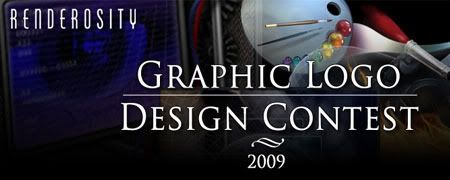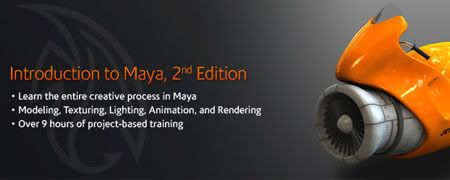SYCODE today launched thirty two SketchUp data exchange plug-ins
Panaji - 6th Jan, 2009 - SYCODE today launched thirty two SketchUp data exchange plug-ins.

"It is not every day that a company launches thirty two products on a single day. Today is a special day for all of us at SYCODE", explains Deelip Menezes, Founder and CEO of SYCODE. "Without doubt, free Google SketchUp is one of the most popular 3D CAD systems out there. However, despite it's extremely large install base, a minute fraction of CAD vendors have taken the trouble of adding SKP read/write support to their CAD software. As a result data exchange between SketchUp and other CAD software is extremely poor. Today SYCODE is changing that - completely. Our SketchUp SKP data exchange plug-ins will change the way users of free Google SketchUp and Professional interact with users of other CAD software."
The plug-ins being released today can be broadly classified into two categories:
(1) CAD file import and export plug-ins for SketchUp
(2) SKP file import and export plug-ins for other CAD software

Using the CAD file import and export plug-ins for Google SketchUp, a SketchUp user can import files from other CAD software as well as neutral file formats and export his 3D models to other file formats that can be read by other CAD software. Similarly, users of other CAD software can import SKP files into their software or export their 3D models to SKP files. SYCODE's SketchUp data exchange plug-ins allow users of Google SketchUp and other CAD software to easily share 3D models with each other.
SYCODE is releasing thirteen file import and export plug-ins for Google SketchUp. The import plug-ins for SketchUp are:
3DM Import for SketchUp - Rhinoceros 3DM file import plug-in for SketchUp
IGES Import for SketchUp - IGES neutral file import plug-in for SketchUp
OBJ Import for SketchUp - Wavefront OBJ file import plug-in for SketchUp
STEP Import for SketchUp - STEP neutral file import plug-in for SketchUp
STL Import for SketchUp - Stereolithography neutral file import plug-in for SketchUp
VTK Import for SketchUp - Visualization Toolkit VTK file import plug-in for SketchUp
The export plug-ins for SketchUp are:
3DM Export for SketchUp - Rhinoceros 3DM file export plug-in for SketchUp
3DS Export for SketchUp - 3D Studio 3DS file export plug-in for SketchUp
DWG Export for SketchUp - AutoCAD DWG file export plug-in for SketchUp
DXF Export for SketchUp - AutoCAD DXF file export plug-in for SketchUp
OBJ Export for SketchUp - Wavefront OBJ file export plug-in for SketchUp
STL Export for SketchUp - Stereolithography neutral file export plug-in for SketchUp
VTK Export for SketchUp - Visualization Toolkit VTK file export plug-in for SketchUp
For more information, please refer to : http://www.sycode.com
Panaji - 6th Jan, 2009 - SYCODE today launched thirty two SketchUp data exchange plug-ins.

"It is not every day that a company launches thirty two products on a single day. Today is a special day for all of us at SYCODE", explains Deelip Menezes, Founder and CEO of SYCODE. "Without doubt, free Google SketchUp is one of the most popular 3D CAD systems out there. However, despite it's extremely large install base, a minute fraction of CAD vendors have taken the trouble of adding SKP read/write support to their CAD software. As a result data exchange between SketchUp and other CAD software is extremely poor. Today SYCODE is changing that - completely. Our SketchUp SKP data exchange plug-ins will change the way users of free Google SketchUp and Professional interact with users of other CAD software."
The plug-ins being released today can be broadly classified into two categories:
(1) CAD file import and export plug-ins for SketchUp
(2) SKP file import and export plug-ins for other CAD software

Using the CAD file import and export plug-ins for Google SketchUp, a SketchUp user can import files from other CAD software as well as neutral file formats and export his 3D models to other file formats that can be read by other CAD software. Similarly, users of other CAD software can import SKP files into their software or export their 3D models to SKP files. SYCODE's SketchUp data exchange plug-ins allow users of Google SketchUp and other CAD software to easily share 3D models with each other.
SYCODE is releasing thirteen file import and export plug-ins for Google SketchUp. The import plug-ins for SketchUp are:
3DM Import for SketchUp - Rhinoceros 3DM file import plug-in for SketchUp
IGES Import for SketchUp - IGES neutral file import plug-in for SketchUp
OBJ Import for SketchUp - Wavefront OBJ file import plug-in for SketchUp
STEP Import for SketchUp - STEP neutral file import plug-in for SketchUp
STL Import for SketchUp - Stereolithography neutral file import plug-in for SketchUp
VTK Import for SketchUp - Visualization Toolkit VTK file import plug-in for SketchUp
The export plug-ins for SketchUp are:
3DM Export for SketchUp - Rhinoceros 3DM file export plug-in for SketchUp
3DS Export for SketchUp - 3D Studio 3DS file export plug-in for SketchUp
DWG Export for SketchUp - AutoCAD DWG file export plug-in for SketchUp
DXF Export for SketchUp - AutoCAD DXF file export plug-in for SketchUp
OBJ Export for SketchUp - Wavefront OBJ file export plug-in for SketchUp
STL Export for SketchUp - Stereolithography neutral file export plug-in for SketchUp
VTK Export for SketchUp - Visualization Toolkit VTK file export plug-in for SketchUp
For more information, please refer to : http://www.sycode.com
0
comments
| Tag:
SketchUp
3DCreative Magazine: February 2009 Edition
by
Artvisualizer Press Media
Wednesday, February 04, 2009

Editorial
Welcome to Issue 42, coming to you from a snow-covered England (woo-hoo!). This month sees the start of yet another great ‘super series’ in 3DCreative – this time we’re talking gothic church interiors, for which 5 wonderful artists will talk us through the principal techniques used in building a church interior. And to make things slightly more interesting, we also welcome a modo artist to the series, in the form of Robert Bergh. So to re-cap, that’s 3d Studio Max, Maya, Cinema 4D, LightWave and modo (we’re good to you guys!). Part 1 of the series starts on page 79 and next month we’ll briefly switch to ZBrush with Jesse Sandifer, who’s going to take us through the sculpting of a stunning gargoyle, which our Max, Maya, Cinema 4D, LightWave and modo artists will later incorporate into their scenes in Part 3. We wanted to make this tutorial series unique, so in the final chapter of the series our 5 artists will be handing over to Zoltan Korcsok who will be handling post-production on each of the software renders. So there’s lots to stay tuned for (I bet that 6-month subscription is looking more than tempting right now *winks*).
Back to basics: this month we interview professional freelancer, Francisco Cortina, who boasts an impressive client list including the likes of DreamWorks, Square and Digital Domain, as well as titles such as Final Fantasy, and that’s not to mention his recent role as modelling supervisor for The Mummy: Tomb of the Dragon Emperor. Check out page 9 to be wowed by Francisco’s portfolio, and then take a short trip to our second interview for February, with illustrator and character artist Roman Style (page 21), who’s currently working for Virtual Fairground in Amsterdam. We love Roman’s unique take on CG character illustrations, and took the opportunity this month to get to know a little about the artist behind the style!
Back to this month’s tutorials, let’s talk ZBrush! Not to disappoint all our ZBrush followers, we’re back again with the latest from Rafael Ghencev – this time with a truly impressive zombie character on page 53. We also welcome back Rafael Grassetti to this month’s Speed Sculpting article, who has taken on the topic of sculpting a “Vegetation Creature” alongside the lovely Magdalena Dadela (page 45). We’ll be seeing more from these two artists in future issues, as Magdalena will be back again with the creation of a Fantasy Orc character, and Rafael Grassetti is going to be sculpting the finale of the ZBrush Character Creation series in May.
Our making of articles this month have been kindly contributed by Joseph Harford, who discusses the creation of his Constanza Bonarelli Bust renders (page 59), and Carlos Ortega who talks cartoon bunnies with an article on the making of his recent Bunny female character (page 65). We’ll be seeing more from Joseph Harford next month, as he’ll be stepping into the ZBrush Character Creation series to talk us through how to sculpt and texture a Vampire in ZBrush.
Hope you enjoy this month’s offerings. See you next month for more! Ed.
Preview for this edition:

Download Free 'Lite' version for February 2009
All Magazine are now purchased through the 3DTotal Shop (Instant Download)
Price : £2.75 (approx $3.78 - €2.93)
These days, most people are overwhelmed by the amount of new and renewed rendering engines out there. The trend tends to be especially true for 3D Studio users. Leading the features trend is speedy Raytracing and Global Illumination. Even Renderman can no longer ignore it, and is now offering Global Illumination and Raytracing.

But there is one package that might have passed you by. Vray, from Chaotic Dimension, a result of the combined forces of Chaos Software and Dimension dESIGN Animation Group, appeared as a public beta late last year. It quickly grew to a very sophisticated package and was released in mid March.
Vray is the brainchild of Vladimir Koylazov (Vlado) and Peter Mitev, they are the core developers of Vray. Based in Sofia, Bulgaria, Chaos Software is part of Chaotic Dimension, which is a production studio that has been around since 1997. Chaotic Dimension offers excellent technical support on Vray by being extremely attentive to the users thought their very active web forum. Since Vray's release in mid March, several updates have been posted on their site, addressing issues posted by the users. They are also very responsive to suggestions and wish lists.
So what makes Vray different from the other packages? Not much. It just seems to do everything that everyone is trying to do, while at the same time doing it faster, cleaner, and at a very reasonable price. To architects with a budget, with tight deadlines, that don't want to learn complicated software, this is an attractive deal.
Vray operates as a plugin to 3D studio. Inside 3D studio it acts as an external rendering engine. What this means is that it completely bypasses 3D Studio's rendering engine. The drawback to an external rendering engine is that it may be incompatible with certain plugins or features of 3D Studio. However, there are few reports of incompatibilities that I could find. I have tried using it on Archvision's RPCreader, Cebas Scalpel, and various free plugins available without any problems. I have even tried it with various aspects of Cebas finalRender.
The default raytracer inside of 3D Studio can give you a great image, including a defocused look. Unfortunately, very few of us have the time to wait for the result. In Vray, the raytracer alone is worth the price. The developers of Vray claim that their product may be the fastest raytracer available in MAX. Once you have tried it, you would have to agree. Reflections, refractions, defocused reflections and refractions, raytraced shadows, even soft raytraced shadows, are rendered fast, anti-aliased, and, according to the developers, more accurately than 3D Studio. This means that you don't have to sacrifice quality for speed. Don't think twice about making your glass look the way glass should look. Just how fast is it? Remember when you finally graduated from a 56k modem to a cable modem? Small websites came up faster, but the real difference came when you tried to download a 50 Meg file. The same is true when Vray, the more your throw at it, the better it performs. In 3D Studio, you would never think of rendering a field of a hundred or more glass vases. With Vray, it cuts through them like butter.

100 glasses, with raytraced reflections, refractions, and shadows, fully anti-aliased, 640x480, Dual P4 1.7Ghz, 4mins 39 secs.
Following suite with its raytracing engine, Global Illumination is also fast. Vray uses irradiance mapping to achieve Global Illumination. This is similar to packages like Brazil r/s, Mental Ray, and finalRender. As with all Global Illumination packages, there is a learning process that one needs to follow. Compared to most, I find that Vray's interface and process is the simplest and most elegant. As with most rendering engines that use Global Illumination, you have issues animating objects or even cameras. Vray offered simple solutions for some of these issues, such as different methods of adding to and saving the photon map. More solutions will soon be available in release 1.1, a free update to be released in the near future.

A quick interior study using GI, originally 2000x1500, Dual P4 1.7Ghz, 15mins 26 secs.

High polygon city with GI, 3 million+ polygons, originally 3000x2000, Dual P4 1.7Ghz, 2+ hours.

High polygon towers with GI, 7 million+ polygons, originally 3000x2000, Dual P4 1.7Ghz, 3+ hours.

High polygon train with GI, originally 3600x2000, Dual P4 1.7Ghz, approx. 1.5 hours.
Vray offers many more features beyond Global Illumination and Raytracing. It offers two different types of motion blur. According to the developers, few rendering engines offer a built in motion blur, and none offer an analytical motion blur solution for 3D Studio. These are 3D motion blurs that look very realistic. It is a great alternative to the 3D motion blurs of 3D studio. The main reason is both quality and speed. The problem is it does not offer a built in quick and dirty approach of 2D motion blur. If you still want 2D motion, in Vray it is still possible to use the built in 3D Studio motion blur as a rendering effect. This is basically the same as Image Motion Blur. While the Image Motion Blur option of 3D studio doesn't always look good under certain types of movement, for fast linear camera's, and other simple movement used by architects, Vray's motion blur maybe overkill and can double or triple your rendering time. Using Image Motion Blur in 3D studio only adds a few seconds in most cases. Unfortunately, since Image Motion Blur is part of the 3D Studio rendering engine, it is not supported in Vray. However, if you want high quality 3D motion blur that is done quicker then most, Vray's analytical motion blur is a great feature.

Shattering ball, fully raytraced image, with GI lighting using HDRI, analytical motion blur, 720x480, Dual P4 1.7Ghz, 30 mins a frame.
DIVX AVI (2.2MB) | MPEG (522K)
One other great feature of Vray is that it is one of the few rendering engine to offer distributed rendering. This is actually a simple concept that is hard to implement. With bucket rendering, the rendering engine sends out a bucket per processor on your computer. With distributed rendering, Vray can add more processors (and more buckets) by using other computers over the network. With a maximum of 10 computers, you could theoretically have 40 processors rendering a single image using 10 quad-processors computers. More likely you may have access to 10 dual processor machines, which would give you 20 processors. For architects that render large stills, this is a great feature. Since your stills could be rendered up to 10 times faster. This is true per license of Vray, so by purchasing another license of Vray you would be able to add another 10 computers to the group. Distributed rendering is still at its infant stage in Vray. Currently Global Illumination is only supported in the not so speedy brute force method. Many updates to the distributed rendering feature, including a new manager are promised for release 1.1.
Some of the other features include, fast caustics, focal blur, new cameras types including fish-eye and spherical, the use of High Dynamic Range Imagery (better known as HDRI), Sub-Surface Light Scattering, and more. They also offer different anti-aliasing methods that are used in combination with 3D studio filtering methods.

Glass study using GI and caustics.

High polygon motorcycles, with defocused reflections and GI, originally 3000x2000, dual P4 1.7, approx 2 hours.
An important aspect of Vray is that they offer an internal adaptive approach to reduce excess sampling when calculating a combination of glossy reflections, motion blur, anti-aliasing etc… While this is mostly invisible to the user, it results in must faster rendering times.
Currently Vray is offering two versions of their software: Basic and Advanced, both of which are currently on sale. Vray Basic, priced at $299, is available now for $209. Vray Advanced, priced at $799, is currently available for $559. Chaotic Dimension is also working on a free version of Vray that will give users the accelerated raytracer. If you would like description of the differences in the packages, check out http://www.vrayrender.com/home/. Vray is currently only available over the web and with a credit card. When you purchase Vray, you will be given access to the Vray page, which allows you to download the program and its documentation. An official reseller, printed documentation, and CD will be available soon, and will be delivered to all of its current users.
Things to look forward to in the new 1.1 version, available soon, and free to current users, are: Analytical Displacement Map that guarantees extremely high (limited only by the resolution of the map) level of detail without mesh generation, Global Photon Mapping that generates a photon map for the whole scene rather than just the view, Distributed rendering manager, support for VIZ 4, along with the obvious bug fixes.
They are also working on trying to release a version for Maya.

A sneak peak at the upcoming displacement map.
All in all, Vray is an extremely promising package. By focusing a great deal of their attention on speed, while making sure that quality was high and the interface was simple, users can easily adopt it into their production. Global Illumination and raytracing is no longer a luxury, but will be part of your everyday process. At its current price, it is the most competitive package I've seen.
By Christopher Nichols (cpnichols@attbi.com)
Special thanks to Mark Briggs and Erick Schiele for providing sample renderings.
For more information on Vray go to :
http://www.cgarchitect.com/news/Reviews/Review007_1.asp

But there is one package that might have passed you by. Vray, from Chaotic Dimension, a result of the combined forces of Chaos Software and Dimension dESIGN Animation Group, appeared as a public beta late last year. It quickly grew to a very sophisticated package and was released in mid March.
Vray is the brainchild of Vladimir Koylazov (Vlado) and Peter Mitev, they are the core developers of Vray. Based in Sofia, Bulgaria, Chaos Software is part of Chaotic Dimension, which is a production studio that has been around since 1997. Chaotic Dimension offers excellent technical support on Vray by being extremely attentive to the users thought their very active web forum. Since Vray's release in mid March, several updates have been posted on their site, addressing issues posted by the users. They are also very responsive to suggestions and wish lists.
So what makes Vray different from the other packages? Not much. It just seems to do everything that everyone is trying to do, while at the same time doing it faster, cleaner, and at a very reasonable price. To architects with a budget, with tight deadlines, that don't want to learn complicated software, this is an attractive deal.
Vray operates as a plugin to 3D studio. Inside 3D studio it acts as an external rendering engine. What this means is that it completely bypasses 3D Studio's rendering engine. The drawback to an external rendering engine is that it may be incompatible with certain plugins or features of 3D Studio. However, there are few reports of incompatibilities that I could find. I have tried using it on Archvision's RPCreader, Cebas Scalpel, and various free plugins available without any problems. I have even tried it with various aspects of Cebas finalRender.
The default raytracer inside of 3D Studio can give you a great image, including a defocused look. Unfortunately, very few of us have the time to wait for the result. In Vray, the raytracer alone is worth the price. The developers of Vray claim that their product may be the fastest raytracer available in MAX. Once you have tried it, you would have to agree. Reflections, refractions, defocused reflections and refractions, raytraced shadows, even soft raytraced shadows, are rendered fast, anti-aliased, and, according to the developers, more accurately than 3D Studio. This means that you don't have to sacrifice quality for speed. Don't think twice about making your glass look the way glass should look. Just how fast is it? Remember when you finally graduated from a 56k modem to a cable modem? Small websites came up faster, but the real difference came when you tried to download a 50 Meg file. The same is true when Vray, the more your throw at it, the better it performs. In 3D Studio, you would never think of rendering a field of a hundred or more glass vases. With Vray, it cuts through them like butter.

100 glasses, with raytraced reflections, refractions, and shadows, fully anti-aliased, 640x480, Dual P4 1.7Ghz, 4mins 39 secs.
Following suite with its raytracing engine, Global Illumination is also fast. Vray uses irradiance mapping to achieve Global Illumination. This is similar to packages like Brazil r/s, Mental Ray, and finalRender. As with all Global Illumination packages, there is a learning process that one needs to follow. Compared to most, I find that Vray's interface and process is the simplest and most elegant. As with most rendering engines that use Global Illumination, you have issues animating objects or even cameras. Vray offered simple solutions for some of these issues, such as different methods of adding to and saving the photon map. More solutions will soon be available in release 1.1, a free update to be released in the near future.

A quick interior study using GI, originally 2000x1500, Dual P4 1.7Ghz, 15mins 26 secs.

High polygon city with GI, 3 million+ polygons, originally 3000x2000, Dual P4 1.7Ghz, 2+ hours.

High polygon towers with GI, 7 million+ polygons, originally 3000x2000, Dual P4 1.7Ghz, 3+ hours.

High polygon train with GI, originally 3600x2000, Dual P4 1.7Ghz, approx. 1.5 hours.
Vray offers many more features beyond Global Illumination and Raytracing. It offers two different types of motion blur. According to the developers, few rendering engines offer a built in motion blur, and none offer an analytical motion blur solution for 3D Studio. These are 3D motion blurs that look very realistic. It is a great alternative to the 3D motion blurs of 3D studio. The main reason is both quality and speed. The problem is it does not offer a built in quick and dirty approach of 2D motion blur. If you still want 2D motion, in Vray it is still possible to use the built in 3D Studio motion blur as a rendering effect. This is basically the same as Image Motion Blur. While the Image Motion Blur option of 3D studio doesn't always look good under certain types of movement, for fast linear camera's, and other simple movement used by architects, Vray's motion blur maybe overkill and can double or triple your rendering time. Using Image Motion Blur in 3D studio only adds a few seconds in most cases. Unfortunately, since Image Motion Blur is part of the 3D Studio rendering engine, it is not supported in Vray. However, if you want high quality 3D motion blur that is done quicker then most, Vray's analytical motion blur is a great feature.

Shattering ball, fully raytraced image, with GI lighting using HDRI, analytical motion blur, 720x480, Dual P4 1.7Ghz, 30 mins a frame.
DIVX AVI (2.2MB) | MPEG (522K)
One other great feature of Vray is that it is one of the few rendering engine to offer distributed rendering. This is actually a simple concept that is hard to implement. With bucket rendering, the rendering engine sends out a bucket per processor on your computer. With distributed rendering, Vray can add more processors (and more buckets) by using other computers over the network. With a maximum of 10 computers, you could theoretically have 40 processors rendering a single image using 10 quad-processors computers. More likely you may have access to 10 dual processor machines, which would give you 20 processors. For architects that render large stills, this is a great feature. Since your stills could be rendered up to 10 times faster. This is true per license of Vray, so by purchasing another license of Vray you would be able to add another 10 computers to the group. Distributed rendering is still at its infant stage in Vray. Currently Global Illumination is only supported in the not so speedy brute force method. Many updates to the distributed rendering feature, including a new manager are promised for release 1.1.
Some of the other features include, fast caustics, focal blur, new cameras types including fish-eye and spherical, the use of High Dynamic Range Imagery (better known as HDRI), Sub-Surface Light Scattering, and more. They also offer different anti-aliasing methods that are used in combination with 3D studio filtering methods.

Glass study using GI and caustics.

High polygon motorcycles, with defocused reflections and GI, originally 3000x2000, dual P4 1.7, approx 2 hours.
An important aspect of Vray is that they offer an internal adaptive approach to reduce excess sampling when calculating a combination of glossy reflections, motion blur, anti-aliasing etc… While this is mostly invisible to the user, it results in must faster rendering times.
Currently Vray is offering two versions of their software: Basic and Advanced, both of which are currently on sale. Vray Basic, priced at $299, is available now for $209. Vray Advanced, priced at $799, is currently available for $559. Chaotic Dimension is also working on a free version of Vray that will give users the accelerated raytracer. If you would like description of the differences in the packages, check out http://www.vrayrender.com/home/. Vray is currently only available over the web and with a credit card. When you purchase Vray, you will be given access to the Vray page, which allows you to download the program and its documentation. An official reseller, printed documentation, and CD will be available soon, and will be delivered to all of its current users.
Things to look forward to in the new 1.1 version, available soon, and free to current users, are: Analytical Displacement Map that guarantees extremely high (limited only by the resolution of the map) level of detail without mesh generation, Global Photon Mapping that generates a photon map for the whole scene rather than just the view, Distributed rendering manager, support for VIZ 4, along with the obvious bug fixes.
They are also working on trying to release a version for Maya.

A sneak peak at the upcoming displacement map.
All in all, Vray is an extremely promising package. By focusing a great deal of their attention on speed, while making sure that quality was high and the interface was simple, users can easily adopt it into their production. Global Illumination and raytracing is no longer a luxury, but will be part of your everyday process. At its current price, it is the most competitive package I've seen.
By Christopher Nichols (cpnichols@attbi.com)
Special thanks to Mark Briggs and Erick Schiele for providing sample renderings.
For more information on Vray go to :
http://www.cgarchitect.com/news/Reviews/Review007_1.asp
- NVidia PhysX Rigid Body support via RayFire user interface. Create dynamic simulations with THOUSANDS of objects. Supports Wind, PBombs, Gravity, and Drag space warps as additional influence forces. Ability to trigger simulation using mouse cursor by pulling or tipping over objects.
Building demolition. Top view.
Download.
YouTube.
Building demolition. Bottom view.
RayFire Tool | PhysX tests by Brandon Riza. - Interactive Demolition System. Fast and easy way for smashing and crushing objects. Creates dynamic simulation and demolishes objects accordingly to their material and collision strength.
Concrete bars demolition.
Download.
YouTube.
Glass and fast moving object. - Animatable Time Scale property for PhysX dynamic simulation allows You to create Bullet Time effect in a seconds.

Download.
YouTube. - Explosions. Multiple bombs support. New RF_Bomb helper allows You to set up a lot of bombs with different explosion options. Also available four new explosion directions: Spherical, Cylindrical, Planar, and Cone.

- Voronoi fragmentation types. Three new fragmentation types based on Voronoi diagram: Uniform, Relative to Bomb\Impact point and By particle system.
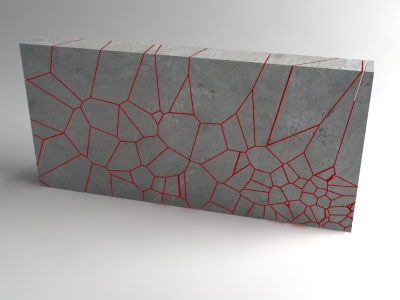
- Draw fragment mode. Fragment objects drawing strokes on screen in all supported views.
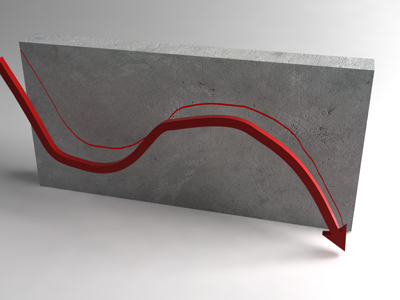
- Fragmentation by Shapes. Also using new feature You able to create shapes from black and white maps.
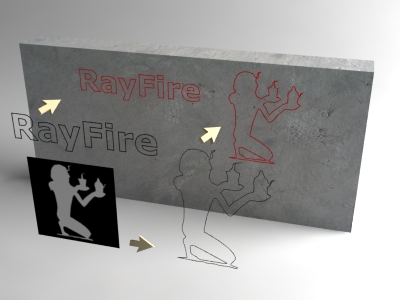
Download technical demonstration. - Fragmentation relative to Bomb. Fragment object with more tiny fragments to point in space.
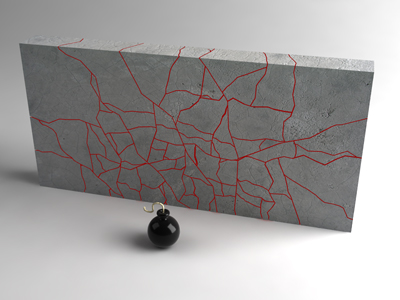
- Fragmentation relative to Mouse. Fragment objects relative to mouse cursor position.(PLUS:Detailisation by Mouse Corsor Idle)

- Fragmentation relative to object Pivot Point.
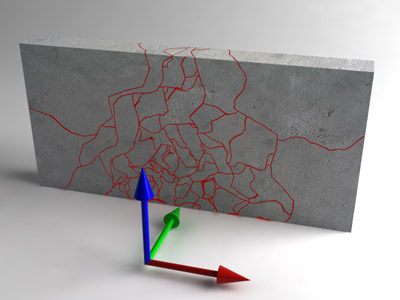
- Irregular fragmentation type.
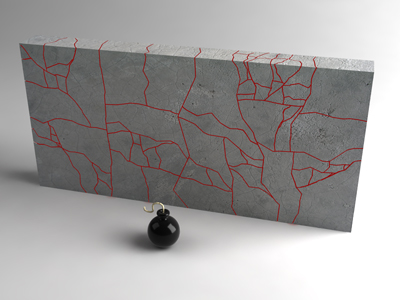
- Uniform fragmentation type.
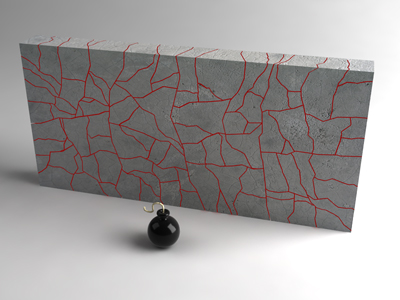
- Continuous fragmentation type.
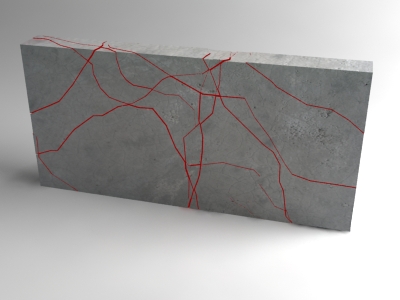
- Reactor Rigid Body support via RayFire user interface.
- Automatic Update System.
RayFire Tool 1.4 video demonstration. Rendered.
- PhysX Rigid Body animation with Wind space warp support.

Download
YouTube.
- PhysX Rigid Body animation with different friction.

Download
YouTube.
RayFire Tool 1.34 video demonstration. Rendered.
- Shooting with Reactor Hit, Predefined fragmented holes and some effects. Download - 5Mb

- Breaking prefragmented glass. Download - 4Mb

- Exploding prefragmented box. Download - 13Mb

- Breaking prefragmented cylinder. Download - 4Mb

- Author - Sam Khorshid, Rif Dagher. Only Precutting - RayFire Tool. Dynamics -Thinking Particles 3. Dust and Smoke - FumeFx
0
comments
| Tag:
Others
RRP: $39.80 | $25.00, Author: Matthieu Salvaing
Oscar Niemeyer, one of the most prolific architects of the 20th century, has long been considered a pioneer of modern architecture. This book is an intimate exploration of one man's unique vision, and his commitment to it even as he faced exile from his home country, Brazil.

Niemeyer's crowning achievement was the creation of a new capital for Brazil. Named chief architect for Brasilia, Niemeyer used his signature style - a play on the contrast between curves and concrete - to design its major buildings and left his mark on an entire nation. Now 92 years old, Niemeyer remains one of the greatest living architects of our time. With an in-depth interview and photographs by Matthieu Salvaing - who traveled with Niemeyer from Rio to Brasilia, from Sao Paulo to Belo Horizonte, this book is the candid testimony of a living legend.
Photographer Matthiue Salvaing has traveled the world for the past ten years. His inspirations include design, fashion, and architecture. His exploration of Brazil and his friendsip with Oscar Niemeyer have been key in the development of his work.
* Hardcover: 80 pages
* Publisher: Assouline (April 2002)
For more information & Buying order :
http://66.98.198.108/product_info.php?products_id=20753
Oscar Niemeyer, one of the most prolific architects of the 20th century, has long been considered a pioneer of modern architecture. This book is an intimate exploration of one man's unique vision, and his commitment to it even as he faced exile from his home country, Brazil.

Niemeyer's crowning achievement was the creation of a new capital for Brazil. Named chief architect for Brasilia, Niemeyer used his signature style - a play on the contrast between curves and concrete - to design its major buildings and left his mark on an entire nation. Now 92 years old, Niemeyer remains one of the greatest living architects of our time. With an in-depth interview and photographs by Matthieu Salvaing - who traveled with Niemeyer from Rio to Brasilia, from Sao Paulo to Belo Horizonte, this book is the candid testimony of a living legend.
Photographer Matthiue Salvaing has traveled the world for the past ten years. His inspirations include design, fashion, and architecture. His exploration of Brazil and his friendsip with Oscar Niemeyer have been key in the development of his work.
* Hardcover: 80 pages
* Publisher: Assouline (April 2002)
For more information & Buying order :
http://66.98.198.108/product_info.php?products_id=20753
0
comments
| Tag:
Books
Xfrog is an organic modeling application which uses an algorithmic approach to modeling. Now if that all sounds a little to technical (It does to me) don't worry the way the interface is set out makes it easy to get to grips with. The image below shows Xfrog set up on a dual monitor system showing how easy it is to customize the interface.

In very basic terms modeling is done by dragging components onto other components in the hierarchy window an example below showing a tree dragged onto the Root component then another tree onto the first then finally a leaf component dragged onto that.
But the great thing about Xfrog is the amount each component can be adjusted, below is the parameter window of a basic tree component as you can see there are so many adjusting sliders they can't all fit into the window.

One of the newest features of Xfrog is the ability to animate, you can create a bud and have it grow to a full flower or tree or even an alien type creature and then export as a 3d object ready to animate in the program of your choice. The image below shows 3 steps of a dandelion opening then turning to seed, this sequence comes with the demo of Xfrog and is very much worth seeing.
Xfrog also allows you to texture your models so if for example you where building a tree you could map a real leaf onto a plane using an alpha channel to create more detail and at the same time save polygon space. The image below is the oak tree that comes with Xfrog rendered close up.
Xfrog is a very capable program made by a very supportive company and while the results aren't instant, with a little time and practice you can make spectacular organic objects whether they be trees, plants or pure fantasy then using the superb export fill your 3d scenes with them.
Xfrog is a modeling and animation system specializing in the easy generation and animation of complex organic structures. There are two versions of Xfrog available: The Full version and the Lite version. The Xfrog Full version comprises all features of Xfrog including animation capabilities. Xfrog Lite version does not provide animation functionality.

Xfrog combines the creation of normal geometric objects (the primitives) with information on how this geometry is organized (the component hierarchy). With Xfrog you have primitives, such as cubes, spheres etc. and components, such as phiball, tree, etc. which together provide a hierarchical structure. The components embody algorithmic descriptions of objects that can be found in nature, such as tree branches, leaves, or sea shells, jellyfish, etc. By combining different components and assigning specific values to the components it is easy to create complex objects that follow their natural examples. You can build almost any tree found in Nature, or flowers, houseplants, etc. As well, you can use Xfrog for architectural sketches and abstract organic artwork. Xfrog uses a procedural graph network approach that allows you to link different components together and, thus easily link components which affect each other and together build a hierarchical organic structure. All values of all components may as well be animated - such as a flower blossoming, or a tree growing and changing over time.
System requirements
PC with minimum 400 mhz processor, OpenGL graphics support, 256 or higher RAM. Xfrog will run in PC emulation modes on Mac, Xfrog also runs on IRIX and Linux operating systems, contact us for the appropriate download.
Export Availability :

License
To fully use Xfrog you need to purchase a license key. There are several ways to do this, and if you have additional questions about licensing for educational or multiple platform use, please contact us directly.
1) http://www.xfrog.com/purchase.html
2) fax, +1 24 82 81 53 18, phone +49 30 78 89 65 00
3) email : sales@xfrog.com

In very basic terms modeling is done by dragging components onto other components in the hierarchy window an example below showing a tree dragged onto the Root component then another tree onto the first then finally a leaf component dragged onto that.
But the great thing about Xfrog is the amount each component can be adjusted, below is the parameter window of a basic tree component as you can see there are so many adjusting sliders they can't all fit into the window.

One of the newest features of Xfrog is the ability to animate, you can create a bud and have it grow to a full flower or tree or even an alien type creature and then export as a 3d object ready to animate in the program of your choice. The image below shows 3 steps of a dandelion opening then turning to seed, this sequence comes with the demo of Xfrog and is very much worth seeing.
Xfrog also allows you to texture your models so if for example you where building a tree you could map a real leaf onto a plane using an alpha channel to create more detail and at the same time save polygon space. The image below is the oak tree that comes with Xfrog rendered close up.
Xfrog is a very capable program made by a very supportive company and while the results aren't instant, with a little time and practice you can make spectacular organic objects whether they be trees, plants or pure fantasy then using the superb export fill your 3d scenes with them.
Xfrog is a modeling and animation system specializing in the easy generation and animation of complex organic structures. There are two versions of Xfrog available: The Full version and the Lite version. The Xfrog Full version comprises all features of Xfrog including animation capabilities. Xfrog Lite version does not provide animation functionality.

Xfrog combines the creation of normal geometric objects (the primitives) with information on how this geometry is organized (the component hierarchy). With Xfrog you have primitives, such as cubes, spheres etc. and components, such as phiball, tree, etc. which together provide a hierarchical structure. The components embody algorithmic descriptions of objects that can be found in nature, such as tree branches, leaves, or sea shells, jellyfish, etc. By combining different components and assigning specific values to the components it is easy to create complex objects that follow their natural examples. You can build almost any tree found in Nature, or flowers, houseplants, etc. As well, you can use Xfrog for architectural sketches and abstract organic artwork. Xfrog uses a procedural graph network approach that allows you to link different components together and, thus easily link components which affect each other and together build a hierarchical organic structure. All values of all components may as well be animated - such as a flower blossoming, or a tree growing and changing over time.
System requirements
PC with minimum 400 mhz processor, OpenGL graphics support, 256 or higher RAM. Xfrog will run in PC emulation modes on Mac, Xfrog also runs on IRIX and Linux operating systems, contact us for the appropriate download.
Export Availability :
- Discreet 3ds max
- Animation:Master
- Autodesk VIZ
- Bryce
- Alias_WaveFront_MAYA
- Cinema4D
- LightWave
- Autodesk Maya
- Autodesk Autocad DXF
- 3dStudio 3ds
- Renderman
- Vue_D'Esprit
- Wavefront

License
To fully use Xfrog you need to purchase a license key. There are several ways to do this, and if you have additional questions about licensing for educational or multiple platform use, please contact us directly.
1) http://www.xfrog.com/purchase.html
2) fax, +1 24 82 81 53 18, phone +49 30 78 89 65 00
3) email : sales@xfrog.com
0
comments
| Tag:
Others
RRP: $95.00 | $85.00, Author: Jodido
"In architecture, there is a part that is the result of logical reasoning and a part that is created through the senses. There is always a point where they clash. I don't think architecture can be created without that collision." -- Tadao Ando
* The Tadao touch:
* Ando's complete works to date
* New format - new price!
"In architecture, there is a part that is the result of logical reasoning and a part that is created through the senses. There is always a point where they clash. I don't think architecture can be created without that collision." -Tadao Ando Philippe Starck describes him as a "mystic in a country which is no longer mystic." Philip Drew calls his buildings "land art" that "struggle to emerge from the earth."
He is the only architect to have won the discipline's four most prestigious prizes: the Pritzker, Carlsberg, Praemium Imperiale, and Kyoto Prize. His name is Tadao Ando, and he is the world's greatest living architect.

Combining influences from Japanese tradition with the best of Modernism, Ando has developed a completely unique building aesthetic that makes use of concrete, wood, water, light, space, and nature in a way that has never been witnessed in architecture. Ando has designed award-winning private homes, churches, museums, apartment complexes, and cultural spaces throughout Japan, as well as in France, Italy, Spain, and the USA. This book, created at the height of Ando's illustrious career, presents his complete works to date.
* Hardcover: 500 pages
* Publisher: Taschen; First edition published June 1, 2007
For more information & buying order :
http://66.98.198.108/product_info.php?products_id=20756
"In architecture, there is a part that is the result of logical reasoning and a part that is created through the senses. There is always a point where they clash. I don't think architecture can be created without that collision." -- Tadao Ando
* The Tadao touch:
* Ando's complete works to date
* New format - new price!
"In architecture, there is a part that is the result of logical reasoning and a part that is created through the senses. There is always a point where they clash. I don't think architecture can be created without that collision." -Tadao Ando Philippe Starck describes him as a "mystic in a country which is no longer mystic." Philip Drew calls his buildings "land art" that "struggle to emerge from the earth."
He is the only architect to have won the discipline's four most prestigious prizes: the Pritzker, Carlsberg, Praemium Imperiale, and Kyoto Prize. His name is Tadao Ando, and he is the world's greatest living architect.

Combining influences from Japanese tradition with the best of Modernism, Ando has developed a completely unique building aesthetic that makes use of concrete, wood, water, light, space, and nature in a way that has never been witnessed in architecture. Ando has designed award-winning private homes, churches, museums, apartment complexes, and cultural spaces throughout Japan, as well as in France, Italy, Spain, and the USA. This book, created at the height of Ando's illustrious career, presents his complete works to date.
* Hardcover: 500 pages
* Publisher: Taschen; First edition published June 1, 2007
For more information & buying order :
http://66.98.198.108/product_info.php?products_id=20756
0
comments
| Tag:
Books

